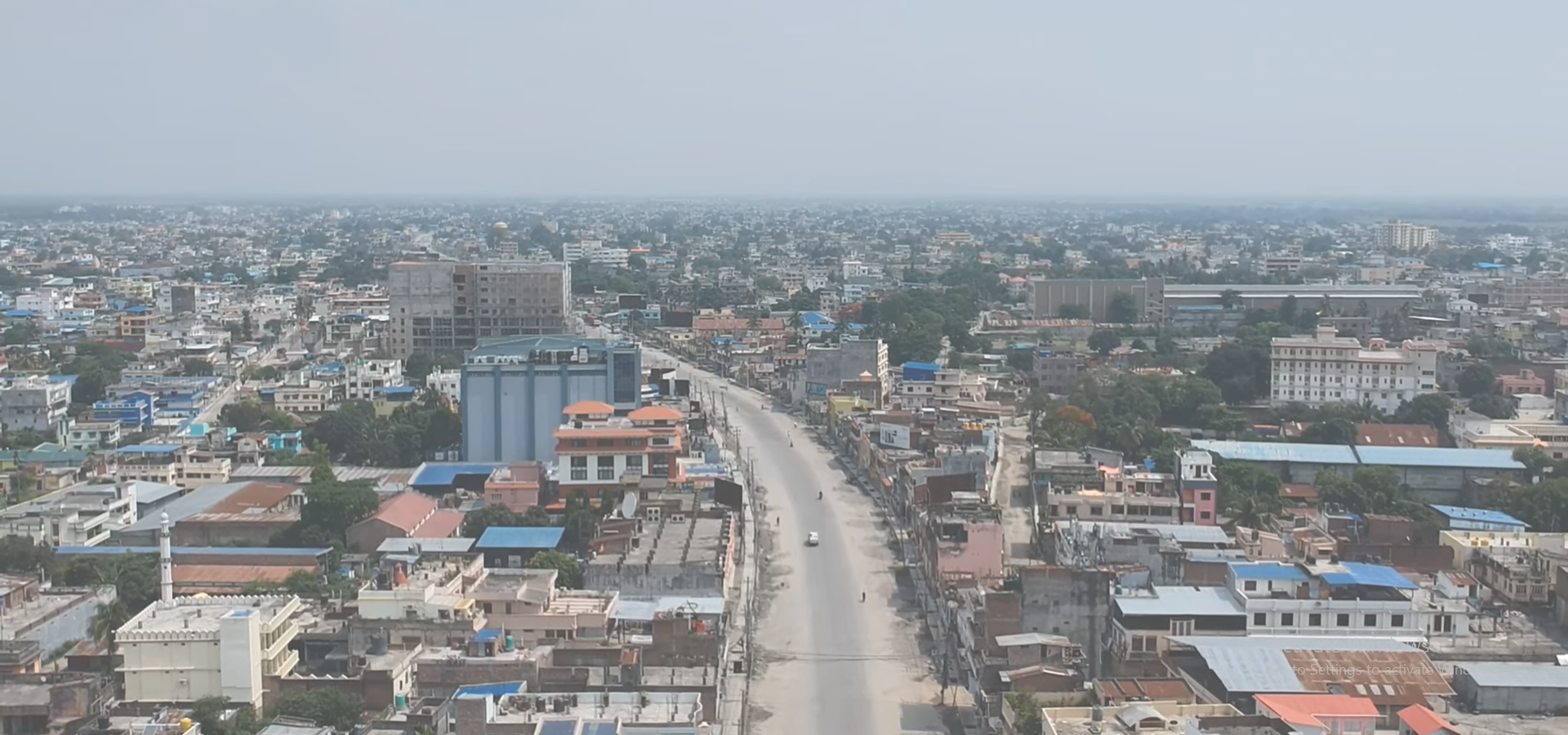Jhapa, Koshi Province, Nepal
🇳🇵 Jhapa (Nepali: झापा गाउँपालिका) is a rural municipality (gaunpalika) out of seven rural municipality located in Jhapa District of Koshi Province of Nepal. There are a total of 15 municipalities in Jhapa in which 8 are urban and 7 are rural.
According to Ministry of Federal Affairs and Local Developme Jhapa has an area of 94.12 square km (36.34 sq mi) and the total population of the municipality is 34,601 as of Census of Nepal 2011.
Kumarkhod, Taganduba and Sharanamati which previously were all separate Village development committee merged to form this new local level body. Fulfilling the requirement of the new Constitution of Nepal 2015, Ministry of Federal Affairs and Local Development replaced all old VDCs and Municipalities into 753 new local level body (Municipality).
The rural municipality is divided into total 7 wards and the headquarter of this newly formed rural municipality is situated in Taganduba.
Jhapa District (झापा जिल्ला;) is a district of Koshi Province in eastern Nepal named after a Rajbanshi Surjapuri language word "Jhapa", meaning "to cover" (verb). The 2021 Nepal Census, puts the total population of the district at 994,090. The total area of the district is 1,606 square kilometres.
The lowlands of Limbuwan (present-day terai lands of Sunsari, Morang and Jhapa) was collectively known as Morang since the time of King Mawrong of 7th century. In the beginning of 1400 AD, Morang Kingdom patriated from Kingdom of Ilam and Kingdom of Mikluk Bodhey (Choubise) and started ruling on its own.
Geography: Location Jhapa is the easternmost district of Nepal and lies in the fertile Terai plains. It is part of the Outer Terai. Jhapa borders with Ilam in the north, Morang in the west, the Indian state of Bihar in the south and the Indian state of West Bengal to the south-east and east. Geographically, it covers an area of 1,606 km² (620 sq mi) and lies on 87°39’ east to 88°12’ east longitude and 26°20’ north to 26°50’ north latitude.
Geography The lowest elevation point is 58 meters which is the lowest land in Nepal and the highest elevation point is 500 meters from mean sea level.
Administrative divisions Jhapa consists of 15 administrative divisions including eight municipalities and seven rural municipalities. Each division has wards according to the demographic and geographic size. These are:
Municipalities • Mechinagar Municipality • Bhadrapur Municipality • Birtamod Municipality • Arjundhara Municipality • Kankai Municipality • Shivasatakshi Municipality • Gauradaha Municipality • Damak Municipality;
Rural municipalities • Buddhashanti Rural Municipality • Haldibari Rural Municipality • Kachankawal Rural Municipality • Barhadashi Rural Municipality • Jhapa Rural Municipality • Gauriganj Rural Municipality • Kamal Rural Municipality.
Demographics At the time of the 2011 Nepal census, Jhapa District had a population of 812,650.
As first language, 55.7% spoke Nepali, 10.3% Rajbanshi, 5.6% Limbu, 5.5% Maithili, 3.6% Santali, 2.5% Rai, 2.4% Urdu, 2.1% Tamang, 1.5% Newar, 1.5% Tajpuriya, 1.2% Magar, 1.0% Dhimal, 0.8% Tharu, 0.7% Bengali, 0.6% Gurung, 0.5% Meche, 0.4% Bantawa, 0.4% Bhojpuri, 0.4% Hindi, 0.4% Rajasthani, 0.2% Chamling, 0.2% Danuwar, 0.2% Sunuwar, 0.2% Uranw/Urau, 0.1% Bhujel, 0.1% Ganagai, 0.1% Haryanvi, 0.1% Kisan, 0.1% Kulung, 0.1% Kumhali, 0.1% Majhi, 0.1% Sherpa, 0.1% Yakkha and 0.4% other languages.
Ethnicity/caste: 23.8% were Hill Brahmin, 15.7% Chhetri, 9.1% Rajbanshi, 6.6% Limbu, 4.7% Rai, 3.8% Satar/Santal, 3.3% Newar, 3.2% Musalman, 3.0% Kami, 2.9% Tamang, 2.2% Magar, 1.9% Damai/Dholi, 1.5% Tajpuriya, 1.3% Sanyasi/Dasnami, 1.2% Gangai, 1.2% Tharu, 1.1% Dhimal, 0.9% Gharti/Bhujel, 0.9% Gurung, 0.9% Majhi, 0.7% Teli, 0.6% Sarki, 0.6% Yadav, 0.5% Bengali, 0.5% Marwadi, 0.5% Meche, 0.5% other Terai, 0.4% Terai Brahmin, 0.4% Hajam/Thakur, 0.4% Musahar, 0.3% Danuwar, 0.3% Dhanuk, 0.3% Halwai, 0.3% Kumal, 0.3% Sunuwar, 0.2% Jhangad/Dhagar, 0.2% Kathabaniyan, 0.2% Kurmi, 0.2% Mallaha, 0.2% Sherpa, 0.1% Baraee, 0.1% Chamar/Harijan/Ram, 0.1% Chamling, 0.1% other Dalit, 0.1% Dom, 0.1% Dusadh/Paswan/Pasi, 0.1% other Janajati, 0.1% Kalwar, 0.1% Kayastha, 0.1% Kewat, 0.1% Khawas, 0.1% Kisan, 0.1% Koche, 0.1% Koiri/Kushwaha, 0.1% Kulung, 0.1% Munda, 0.1% Nuniya, 0.1% Punjabi/Sikh, 0.1% Rajput, 0.1% Sonar, 0.1% Sudhi, 0.1% Tatma/Tatwa, 0.1% Thakuri, 0.1% Yakkha and 0.5% others.
Religion: 79.9% were Hindu, 8.3% Kirati, 4.8% Buddhist, 3.2% Muslim, 1.9% Christian, 1.4% Prakriti and 0.3% others.
Literacy: 75.0% could read and write, 1.8% could only read and 23.2% could neither read nor write.
Jhapa District has average population density of around 619 per square kilometer. The district population growth rate is 1.93%. However, the growth is balanced and in-migration is rapidly increasing day to day into the district. At the time of the 2021 Nepal census, Jhapa District had a population of 994,090 making it the 4th largest district in Nepal after Kathmandu, Morang and Rupandehi.
Being at the cross-roads of the eastern hills and the eastern Terai, Jhapa has huge ethnic diversity with 110 castes/ethnic groups represented. The largest communities are Bahun and Chhetri. Other communities include the Janajati Limbu and other Kirati peoples, Dalit communities like Kami and Damai, as well as Tamang, Newar and Magar and Adivasi communities like the Rajbanshi/Tajpuriya, Gangai or Ganesh, Santal, Tharu and Dhimal in the Terai.
Asia/Kathmandu/Province_1

Jhapa has a population of over 34,601 people. Jhapa also forms the centre of the wider Jhapa District which has a population of over 994,090 people. It is also a part of the larger Koshi Province.
To set up a UBI Lab for Jhapa see: https://www.ubilabnetwork.org Twitter: https://twitter.com/UBILabNetwork
🇮🇳 Jalpaiguri 26.52
🇮🇷 Bandar Lengeh 26.55
Locations Near: Jhapa 87.8696,26.5039
🇳🇵 Mechinagar 88.117,26.667 d: 30.5
🇳🇵 Biratnagar 87.279,26.457 d: 59
🇮🇳 Siliguri 88.429,26.708 d: 60.1
🇳🇵 Itahari 87.267,26.65 d: 62.1
🇮🇳 Darjeeling 88.25,27.033 d: 69.9
🇳🇵 Dharān 87.283,26.817 d: 67.9
Antipodal to: Jhapa -92.13,-26.504
🇵🇪 Pisco -76.2,-13.717 d: 17831
🇵🇪 Ica -75.733,-14.067 d: 17819.9
🇵🇪 Chincha Alta -76.133,-13.45 d: 17805.4
🇵🇪 Callao -77.15,-12.067 d: 17772.4
🇵🇪 San Isidro -77.033,-12.083 d: 17765.2
🇵🇪 Lima -77.033,-12.05 d: 17762.5
🇵🇪 Villa El Salvador -77,-12.05 d: 17760.1
🇵🇪 Ancón -77.15,-11.733 d: 17744.8